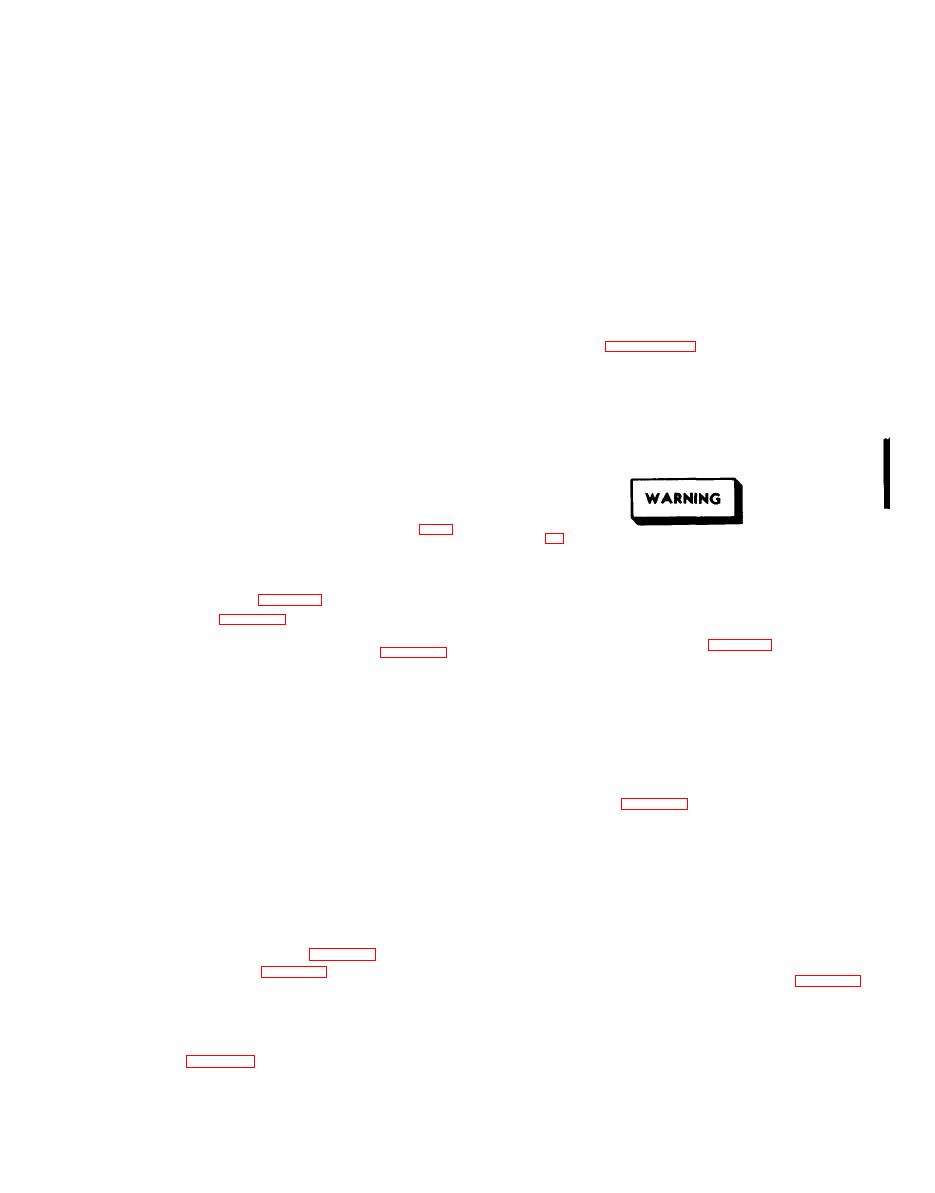 |
|||
|
|
|||
|
Page Title:
Section VII: UNIT MAINTENANCE INSTRUCTIONS |
|
||
| ||||||||||
|
|
 TM
9-2350-238-20-2
Section VII.
MAINTENANCE INSTRUCTIONS
UNIT
procedures in TB SIG 222 must be
2-25.
G E N E R A L . This
section
provides
followed.
general
repair
methods
and
cleaning
pro-
cedures. Special repair and cleaning pro-
After
locating
the
malfunction
and
repair-
10
cedures are provided, as required, in the in-
ing the component, test it for proper
dividual maintenance instructions.
function.
2-26.
REPAIR
METHODS.
Follow torque values given throughout
11
this manual. When no torque value is
1
Complete disassembly is not always
given,
follow
the
torque
limits
guide,
pro-
necessary to make a repair. Exercise
vided in appendix E of this manual, to
good judgement to keep disassembly and
prevent damaging parts.
reassembly to a minimum.
2-27.
CLEANING.
2
Repair or replace unserviceable parts and
hardware. Always replace packings,
Wire brush metal parts to remove rust
1
gaskets, and seals with new parts.
and corrosion.
3
Remove burrs with a stone or file. Re-
move burrs on closely fitted mating sur-
faces by lapping the surfaces with lap-
ping grinding compound (item 13, appx
Dry cleaning solvent (SD2) is toxic
C).
and flammable. Wear protective
goggles and gloves and use only
4
Remove
corrosion
or
rust
with
crocus
in well-ventilated area.
cloth (item 6, appx C) or emery cloth
(item 7, appx C). Use the method that
2
Clean metal parts with dry cleaning sol-
will not damage the surface being
vent (SD2) (item 10, appx C). Metal or
cleaned. Crocus cloth (item 6, appx C)
fiber brushes may be used to apply
should be used to remove corrosion and
cleaning solvent and to remove softened
rust from polished surfaces. Make sure
or dissolved material. Hand scraping with
that critical dimensions are not altered
metal scrapers may be used to remove
when using crocus cloth.
soft
coatings
or
deposits.
5
Repair damaged
threads
with
a
thread
Soak oily or greasy metal parts in a tank
3
chaser or die.
containing dry cleaning solvent (SD2)
(item 10, appx C). The time parts must
6
When welding is authorized, procedures
be in solvent varies with the type and
in TM 9-237 must be followed. Welds
amount of material to be removed.
must be inspected for cracks.
Do not use solvent to clean electrical in-
4
7
Bearings should be inspected and main-
sulation, wires, cables, or wiring
tained following procedures in TM 9-214.
harnesses. Clean these parts by wiping
with a damp cloth. Use a mild soap solu-
8
Clean electrical ground contacts with
tion if necessary. Dry immediately with
crocus cloth (item 6, appx C) or emery
clean dry cloths. Clean contact points
cloth (item 7, appx C). Make sure ground
with flint abrasive paper (item 1, appx C )
connections are tight.
and dust thoroughly after cleaning.
9
Repair
chafed,
broken,
or
damaged
elec-
trical wiring with insulation tape (item
20, appx C). When soldering is required,
|
|
Privacy Statement - Press Release - Copyright Information. - Contact Us |